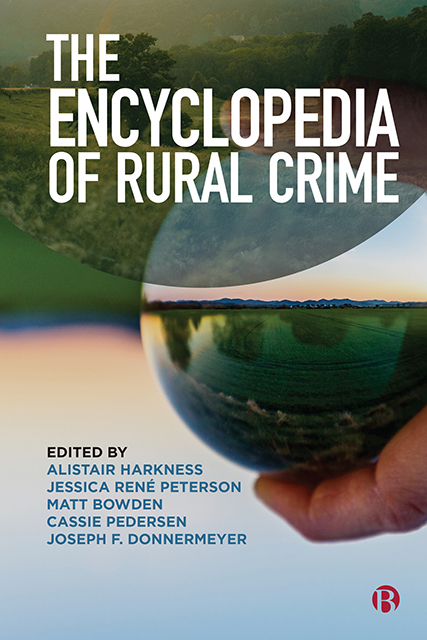Book contents
20 - Drug Use and Dependence
Published online by Cambridge University Press: 20 June 2023
Summary
Drugs are psychoactive substances with the capacity to alter emotional, psychological and bodily functions. Per its definition, the term ‘drugs’ embraces substances of legal (for example alcohol and tobacco) and of illegal status (for example cannabis, heroin, cocaine, crack cocaine and amphetamines) alike. However, both in everyday and scientific language, the term primarily refers to illegal substances. Consumption patterns include a wide range from occasional controlled use employing harm-reduced routes of administration such as inhaling to dependent frequent injecting.
When trying to comprehend the nature of rural drug use and dependence, the literature does not provide a homogenous conception of ‘rural’. With respect to social behaviours including drug use, its meaning very much depends on the specific context. Authors of scientific publications on rural substance use tend to employ descriptive, quantifiable criteria to identify rurality. These typically encompass population size and density, geographic location and accessibility, as well as sometimes economic and employment issues.
However, both legal and illegal substance use constitute highly complex social phenomena and their character and manifestation are fundamentally influenced by the respective cultural and geographic setting in which they occur. Hence, we need to complement the outer, descriptive appearance of a place by an analytic perspective of its inner social organization and ways of functioning including people’s beliefs, values and norms. Only by considering quantitative, descriptive and qualitative analytic characteristics can substance use trends and patterns in different places can be grasped comprehensively.
Since places often encompass both rural and urban features, the term ‘location-specific’ might be more suitable when socio-geographically contextualizing substance use occurrences. For instance, an encompassing in-depth study of the heroin scene on Shetland, an island group located between Scotland and Norway in the North Atlantic, demonstrated that drug scenes of a substantial size exist in extremely remote, isolated locations. At such sites, a town of 9,000 inhabitants might be of a considerably more urban nature and greater significance for the local drugs market than in a more densely populated mainland region (see Stallwitz, 2012).
As opposed to the consumption of alcohol and tobacco, the general public as well as academic scholars have conventionally regarded illegal drug use as tied to urban areas.
- Type
- Chapter
- Information
- The Encyclopedia of Rural Crime , pp. 84 - 87Publisher: Bristol University PressPrint publication year: 2022

